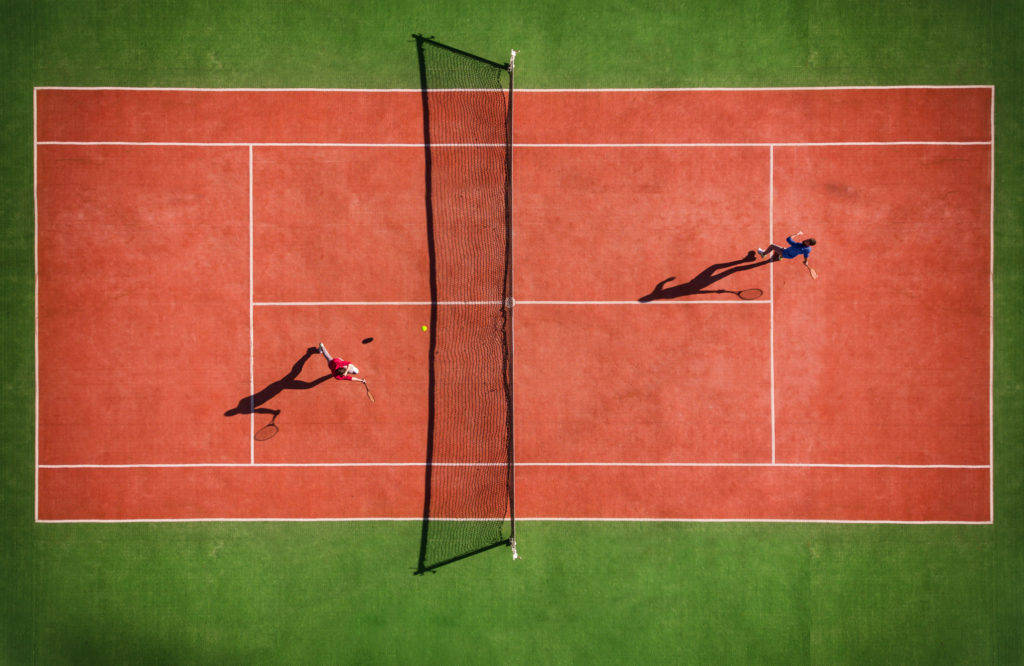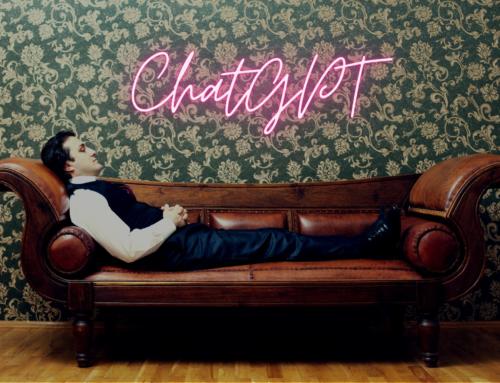In 1984 John McEnroe suffered a devastating defeat in the French Open. His opponent was Ivan Lendl, aka “The Terminator.” Lendl got the name from his killer forehand that used a powerful topspin to dominate his opponents.
McEnroe knew about Lendl’s reputation, so he deliberately focused on countering it using proximity to the net. This worked well for the first two sets. He was able to intercept Lendl’s cross-court passing shots with ease.
But, by the third set, everything changed.
Lendl started using lobs to push McEnroe backward, giving him room again to execute his cross-court shots and gain points. McEnroe’s legendary temper joined the match, and his performance started to suffer.
Ultimately, Lendl won and earned his first Grand Slam Victory.
As McEnroe explains in his biography, “it was the worst loss of my life.”
There is a little untold secret, though.
The reason McEnroe lost was not because of Lendl’s superior technical abilities. He lost because of what he failed to do between the points.
As CEOs, we often believe that a relentless work ethic is the key to success.
In many ways, this is true. We must be determined about our goals, our vision. We must be persistent about the processes and systems we follow to drive excellence.
Founders are known for working hard and very long hours.
We never take breaks, even when we are on a break. We pack our calendars tight with meetings, hoping to wring every bit of productivity out of the day.
When we are asked about a work-life balance, we say things like, we don’t have time for balance, or it’s just hard to achieve.
Or, as my friend John Henry tweeted, “No such thing as work-life balance for founders [and CEOs]. Have to live and breathe the mission, otherwise who will?”
He is right. We are the heart and soul of a company.
I am often asked about how I manage the many projects I am involved in. In other words, they want to know how I manage my time to achieve a work-life balance.
My response is that it’s not about time. It’s about energy.
It has taken some time for me to learn this.

If you watch the match between McEnroe and Lendl, you’ll be pinned to the screen by the competitive war that unfolds before your eyes.
But, tighten your gaze and focus on what happens when these two athletes are not whacking the little ball at each other, and you’ll see something else.
That’s what Jim Loehr did — Founder of the Human Performance Institute and author of The Power of Full Engagement.
He spent hundreds of hours watching the tapes of the world’s top players trying to discern what made the greatest athletes excel above the rest of their peers. For a while, he was frustrated because he could find no significant difference in their level of play and their competitive techniques.
Then, one day, while taking a break from watching several hours of tape, he let the tape run and notice something he hadn’t before.
He noticed that between points, there was a difference.
Here is Jim’s revelation:
These [differences] included the way they walked back to the baseline after a point, how they held their heads and shoulders, where they focused their eyes, the pattern of their breathing and even the way they talked to themselves.
The best players had built the same set of routines between points. These rituals were instinctively meant to maximize their recovery.
After catching his breath from the excitement of this discovery, he went back and watched every taped match again and found that the lower-ranked players had no recovery routine.
He later brought more science to his analysis and hooked up some of the top players to EKGs. What he found was fascinating. In the just sixteen to twenty seconds a player has between points in a match, the heart rates of the top players dropped as much as twenty beats per minute. So, their super-efficient recovery routines supercharged their energy renewal in a very short period of time.
Jim, again:
The lesser competitors remained at high levels through their matches regardless of their level of fitness. The best competitors were using rituals to recover more efficiently and to better prepare for each upcoming point. The performance consequence of instituting precise between-point rituals was dramatic.
Imagine two players of relatively equal talent and fitness in the third hour of a match.
One has been regularly recovering between points, while the other has not. Clearly, the second player will be far more physically fatigued. In turn, fatigue has a cascade effect. A tired player is more susceptible to negative emotions such as anger and frustration, which will likely push the heart rate still higher, and likely lead to muscular tensions. Physical fatigue also makes it far more difficult to concentrate.
This is what cost John McEnroe the 1984 French Open.
During the match, he was giving the game his all. From his perspective, he was playing the most masterful tennis of his life. But then something happened.
“I get a feeling from time to time,” McEnroe has said when trying to explain what happened next, “when it seems that things are going too well, that something bad has to happen.”
That “something bad” was typically a line call that went against him. This time, McEnroe couldn’t blame the officials; this time, it seemed, he went looking for the problem. In the third set, he found it, of all places, in a headset — an NBC cameraman had taken his off and left it on the sidelines, “squawking while I was trying to play.” Unable to ignore it. McEnroe stalked to the camera pit, picked up the headset, and dropped an f-bomb into it at the top of his lungs. “Just like that, my concentration was shot.”
From Jim Loehr’s watchful eye of the tape, he saw something different.
Each time Ivan Lendl stepped up to the line to serve during a tennis match, he predictably wiped his brow with his wristband, knocked the head of his racquet against each of his heels, took sawdust from his pocket, bounced the ball four times, and visualized where he intended to hit the ball. In the process, Lendl was recalibrating his energy: pushing away distraction, calming his physiology, focusing his attention, triggering re-engagement, and preparing his body to perform at its best.
McEnroe, on the other hand, did not refill his batteries. “I wasted too much energy at the French by getting angry,” he laments in his autobiography.
It was the rituals between points that made the difference.

Work-Life Balance is a Myth
Jim’s book and methodology was a game-changer for me.
(Watch this book summary.)
I always focused on time management tools — finding ways to increase my productivity and squeeze in more work. I was a workaholic working all hours of the day and night. And, even on vacation, I struggled to put the racket down and just breathe.
It is why I stress the importance of finding solitude. Staying healthy. Focusing on sleep hygiene — getting at least 7–8 hours every night. Taking long runs. Connecting with my family and friends in a fully present way.
I now believe instead that when you are at work, you need to be one-hundred percent focused on the right things. I call them priorities-ones (P1s). Gary Keller calls it the One-Thing is his book by the same name. When you are focused on mastering your P1s, you’re like that tennis player honing your game and competitive skills. And, while you are in it, you are deliberate in taking breaks to maximize your energy recovery.
When you are home, you then refocus your energy away from work and on your personal P1s. You focus on your family, friends, your personal passions. There you apply the same intensity to these activities focusing one-perfect on what is most important.
To do this well, you need to shift your thinking from balance to focus and from time to energy.
You need to have your energy levels in the right place — recharged — to maintain your focus on P1s for both life and work. Otherwise, they both will suffer.
The recipe is a rhythmic, intense energy expenditure coupled with a deliberate between-the-point period of activities that renew energy.


